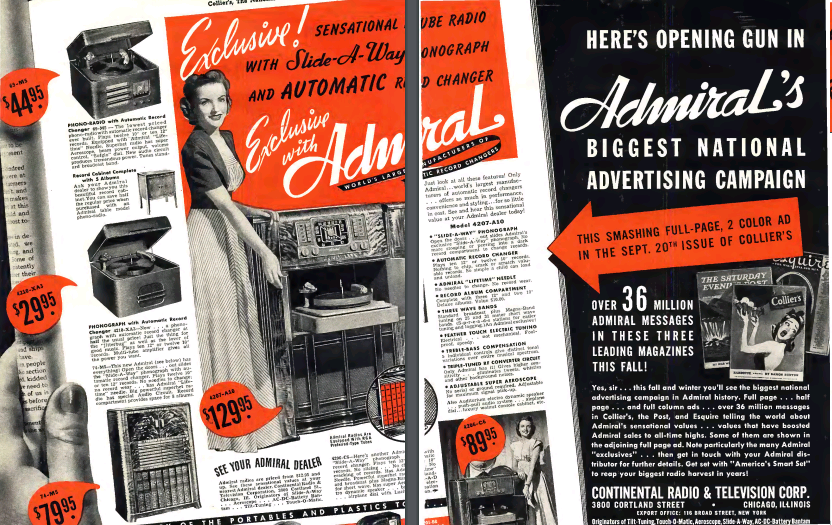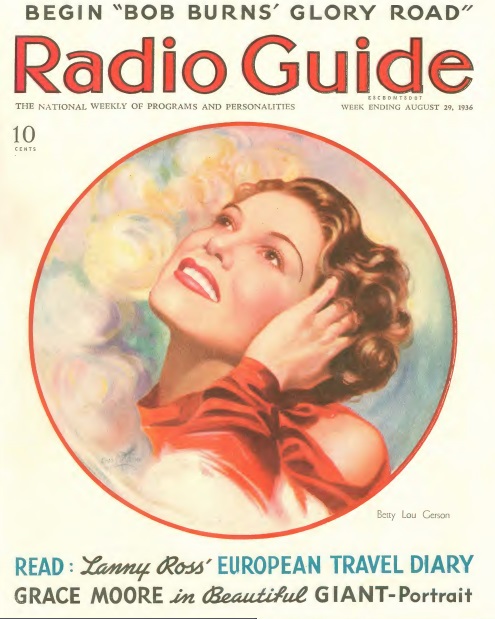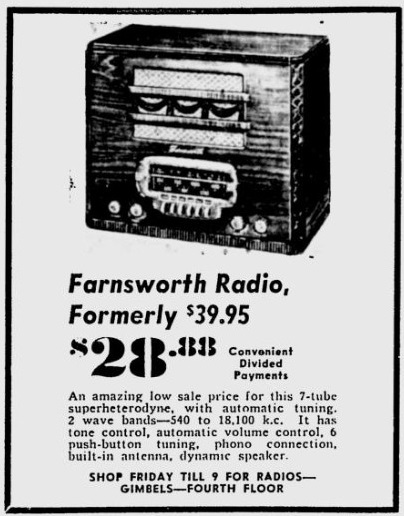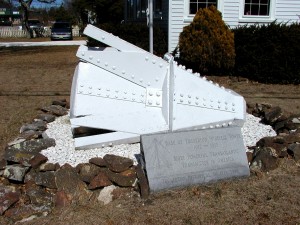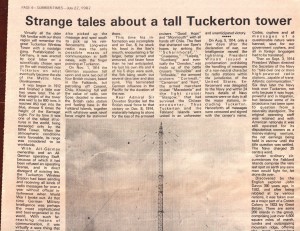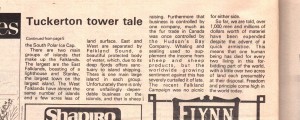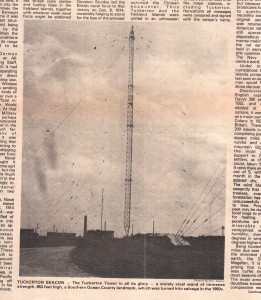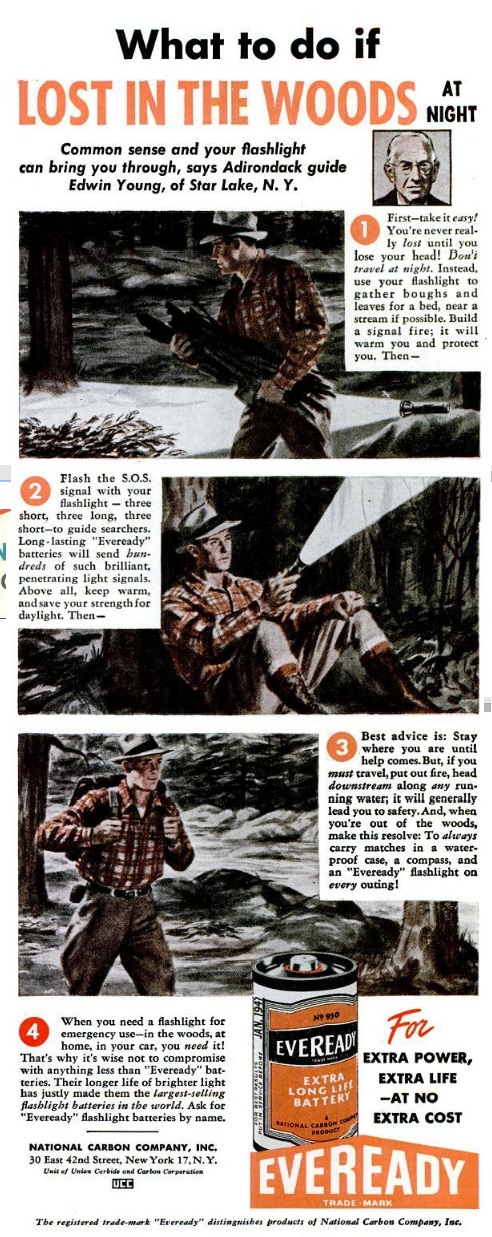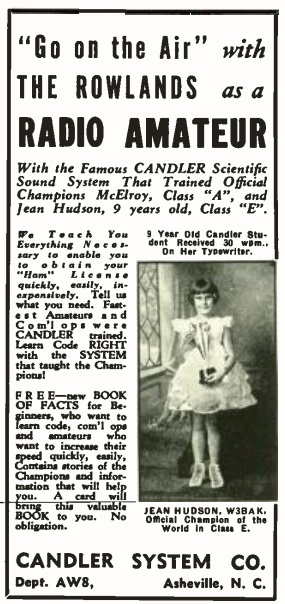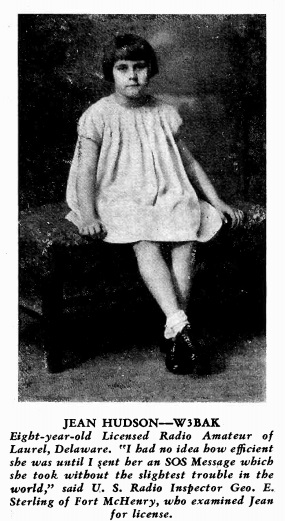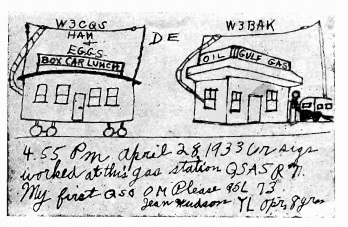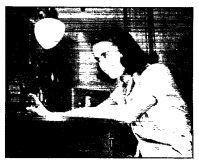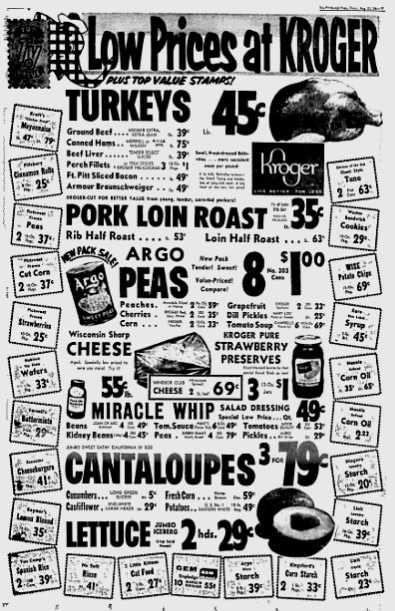This ad from 75 years ago, in the August 1941 issue of Radio Retailing is of special interest to me, since I own the receiver shown here.
The set, model 4207-A10 tunes the broadcast band, as well as the 25 and 31 meter broadcast bands. It’s actually a quite good receiver. As the ad points out, the limited tuning range “s-p-r-e-a-d-s stations for easier tuning and logging.” Even though it did not tune the full range of frequencies included in most shortwave consoles, the bandspread really does make tuning easier. The receiver also has one stage of RF amplification, which is tuned with a permeability tuner ganged to the main tuning condenser. So it pulls in stations quite well. The set I have probably tuned in a lot of wartime broadcasts and served its owner well during the war years.
The set also contains an automatic record changer in the “Slide-A-Way” compartment. The changer played ten 12″ records or twelve 10″ records automatically. The automatic changer in mine stopped functioning decades ago, and I have to give the turntable a little spin to get it going, but it still functions. The ad notes that the set comes with a “lifetime” needle, but I had to replace mine. I sacrificed a ceramic cartridge from a more recent phonograph, and it functions well, although it’s currently held in place with a twist tie.
My set apparently retailed for $129.95. The model shown in the picture, however, is not identical to mine. The one shown appears to be a slightly less expensive model which covered only 31 meters in addition to the broadcast band. According to another item in the magazine, the set was also available as an AM-FM receiver, covering the prewar FM band, and also with one police band and one shortwave band.
The ad above, targeted at retailers, showed the advertising campaign that admiral had planned for the fall. It shows an ad that would be appearing in September in Colliers, Esquire, and the Saturday Evening Post. Dealers were promised that they would have their “biggest radio harvest in years!”
Click Here For Today’s Ripley’s Believe It Or Not Cartoon
![]()

